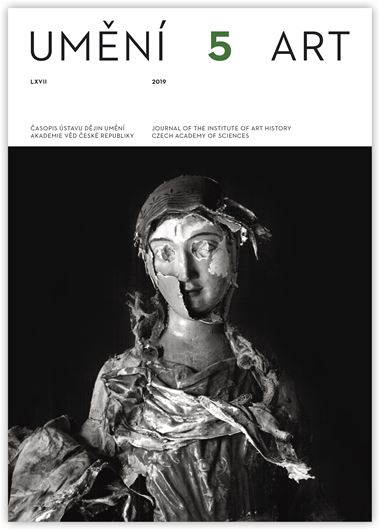Katarína Kolbiarz Chmelinová
The Birthplace of Jan Brokoff and its Sculptural Milieu
The roots of Jan Brokoff lie in the town of Spišska Sobota (St Georgenberg) located in the northern region of the Kingdom of Hungary, today in Slovakia. When the future founder of the renowned family of sculptors was born in 1652, Spišska Sobota was part of the county of Spiš. As one of the towns pawned to Poland by the Kingdom of Hungary, it profited from its close ties to both the Polish and Hungarian environments. Jan Brokoff remained in the until 1675 as is attested by a known confirmation of his origins for the purposes of an ap- prenticeship. The first twenty-three years of the life of the sculptor were therefore connected with his birthplace. Given the customs of the period, it must be assumed that he had by this age gained a rudimentary education at the very least. This article addresses the question of what kind of education this could have been and whether the environment of Brokoff ’s birthplace was of benefit to his sculptural profession. In contrast to the persisting assessments given in earlier Czech studies of the meagre stimulus which Brokoff ’s birthplace offered, this study demonstrates that Spišska Sobota provided not only a sufficient background in which to acquire the basics of sculpture, but also the practical opportunity to become familiarized with the effective running of an art workshop. The article also draws attention to the fact that short after Brokoff ’s birth, the sculptor Pavol Gross the Elder had settled permanently in Spišska Sobota. The successful workshop which he ran in the town for several decades set the tone for the expression of the early Baroque in the Spiš region and its surroundings. What was the output of Gross’s workshop in this period and to what extent could it have influenced Brokoff? What kind of sculptural and overall cultural milieu existed in the Spiš region in the second half of the 17th century? And what led Brokoff to decide to leave his birthplace? This article will attempt to answer these and other questions connected with this opening phase of Jan Brokoff ’s life within the Hungarian environment.
Katarína Kolbiarz Chmelinová: chmelinova@gmail.com
Full-text in the Digital Library of the Czech Academy of Sciences:
https://kramerius.lib.cas.cz/uuid/uuid:505eab5c-e099-42b4-a0d5-80cb142e88f7
< back

